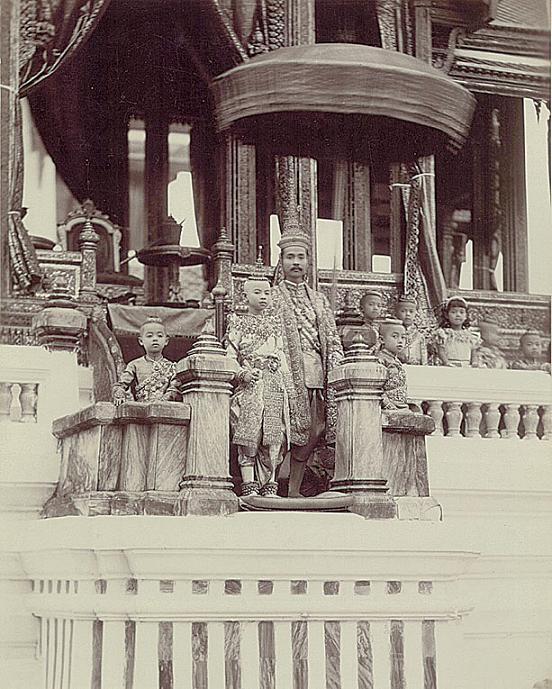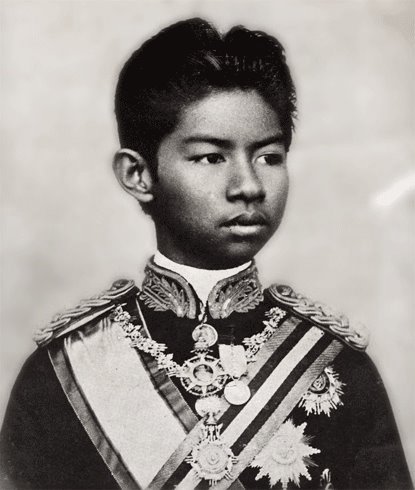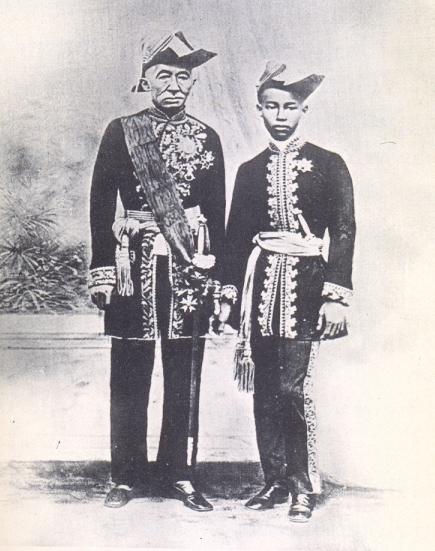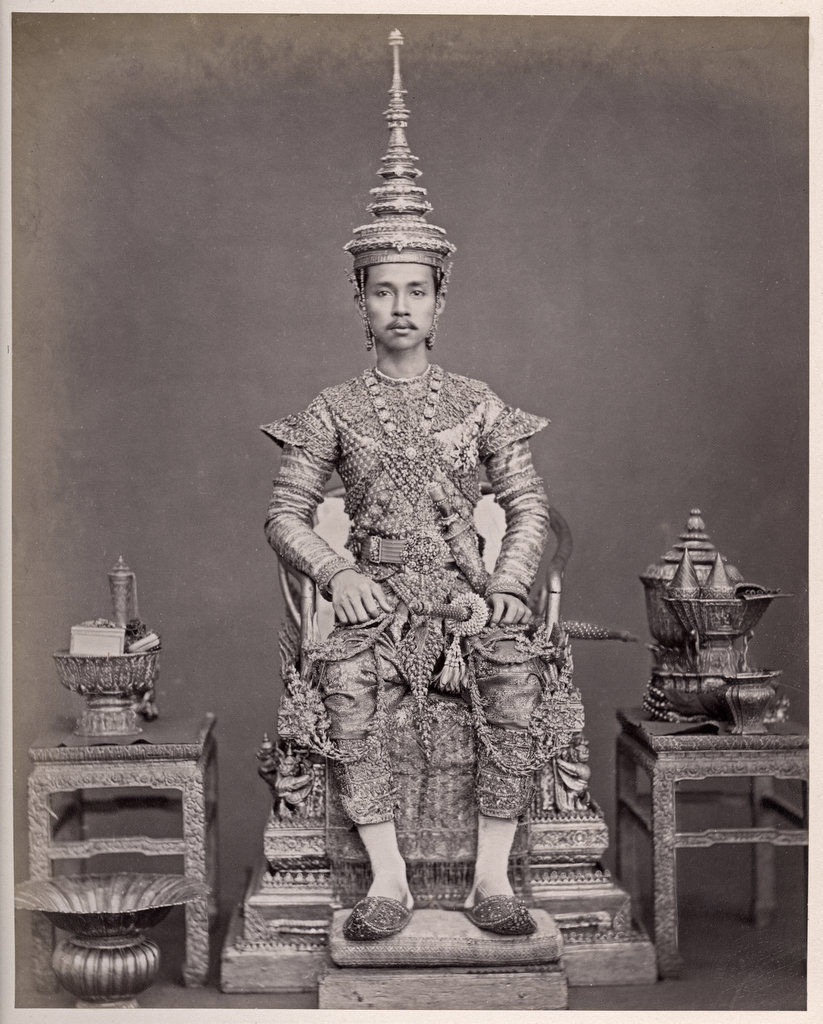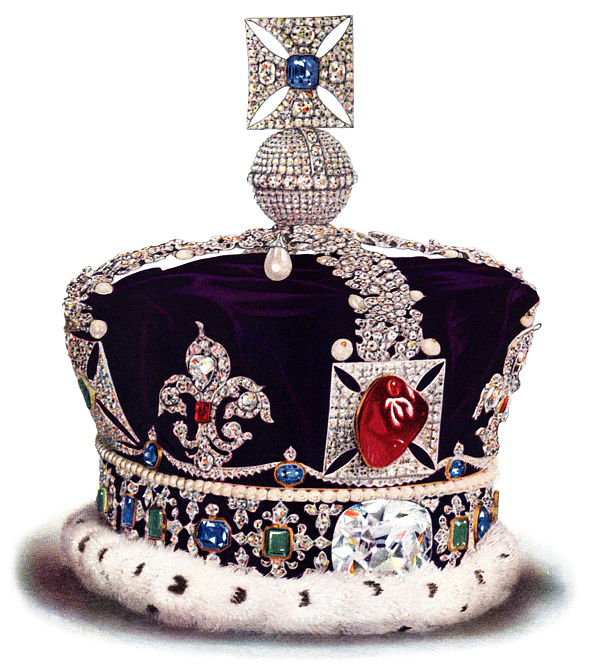|
Vajirunhis
Maha Vajirunhis, Crown Prince of Siam (; ; 27 June 1878 – 4 January 1895) was the first Crown Prince of the Chakri dynasty. He was the first son of King Chulalongkorn and Queen Savang Vadhana together, who were half-siblings. The King built a palace for the Prince, nicknamed Windsor Palace. The European-style palace was demolished after his death. The site is now occupied by the National Stadium of Thailand. Heir apparent In 1886, after the death of the last Vice King Bovorn Vichaichan, King Chulalongkorn chose not to appoint one of his brothers as a new Vice King, but instead appointed his eldest son as the Crown Prince of Siam. On 14 January 1886, he was officially introduced to his position with the title of ''Sayam Makutrajakuman'', or Crown Prince of Siam. From this appointment Sir Ernest Mason Satow, the British ambassador to Thailand, brought a telegraph of congratulations from Queen Victoria of the United Kingdom. Private interests Prince Vajirunhis was interes ... [...More Info...] [...Related Items...] OR: [Wikipedia] [Google] [Baidu] |
Crown Prince Of Thailand
The Crown Prince of Thailand (or Siam; ; ; lit. the royal son of Siam) is a title held by the heir apparent to the Monarchy of Thailand, Thai throne. It was created by King Chulalongkorn (Rama V) in 1886, for his son Prince Vajirunhis, Maha Vajirunhis, the king's eldest son by a royal wife Queen Savang Vadhana. Prior to this, the Siamese throne did not have a law or formal system regulating royal succession. In 1688, King Phetracha of Ayutthaya Kingdom, Ayutthaya created the title of Front Palace, which by the Rattanakosin Kingdom, Rattanakosin period had become the main title granted to the heir presumptive to the throne. However, few Front Palaces succeeded to the throne this way, with the exception of King Rama II, Phutthaloetla Naphalai (Rama II) in 1809. After the death of Wichaichan, Bowon Wichaichan in 1885, the title of Front Palace was abolished and replaced with the title of Crown Prince, who became heir apparent to the throne. In 1924, King Vajiravudh (Rama VI) promul ... [...More Info...] [...Related Items...] OR: [Wikipedia] [Google] [Baidu] |
Crown Prince Of Siam
The Crown Prince of Thailand (or Siam; ; ; lit. the royal son of Siam) is a title held by the heir apparent to the Thai throne. It was created by King Chulalongkorn (Rama V) in 1886, for his son Prince Maha Vajirunhis, the king's eldest son by a royal wife Queen Savang Vadhana. Prior to this, the Siamese throne did not have a law or formal system regulating royal succession. In 1688, King Phetracha of Ayutthaya created the title of Front Palace, which by the Rattanakosin period had become the main title granted to the heir presumptive to the throne. However, few Front Palaces succeeded to the throne this way, with the exception of King Phutthaloetla Naphalai (Rama II) in 1809. After the death of Bowon Wichaichan in 1885, the title of Front Palace was abolished and replaced with the title of Crown Prince, who became heir apparent to the throne. In 1924, King Vajiravudh (Rama VI) promulgated the 1924 Palace Law of Succession to regulate the succession. This law essentially ba ... [...More Info...] [...Related Items...] OR: [Wikipedia] [Google] [Baidu] |
Savang Vadhana
Sri Savarindira (; , 10 September 1862 – 17 December 1955), also known as Savang Vadhana (; ). She was a half-sister and queen of King Chulalongkorn (Rama V). After her first grandson's accession to power in 1935, she became known as Her Majesty Queen Sri Savarindira, The Queen Grandmother of Thailand title in Thailand is Somdetch Phra Phan Vassa Ayika Chao (สมเด็จพระพันวัสสาอัยยิกาเจ้า; ; "the Queen Grandmother"). All her children died before her and she lived to see her grandsons Ananda Mahidol and Bhumibol Adulyadej take the throne. Life She was the 27th daughter of King Rama IV ( King Mongkut or Rama IV) and Princess Consort Piam and thus her husband's half-sister. Her marriage to Chulalongkorn produced the following children: * Crown Prince Maha Vajirunhis (27 June 1878 – 4 January 1894) * Prince Isariyalongkorn (4 September 1879 – 25 September 1879) * Princess Vichitra Chiraprabha (21 April 1881 – 1 ... [...More Info...] [...Related Items...] OR: [Wikipedia] [Google] [Baidu] |
Chakri Dynasty
The Chakri dynasty is the current reigning dynasty of the Thailand, Kingdom of Thailand. The head of the house is the Monarchy of Thailand, king, who is head of state. The family has ruled Thailand since the founding of the Rattanakosin era and the city of Bangkok in 1782; following the end of Taksin's reign, when the capital of Siam shifted to Bangkok. The royal house was founded by Rama I, an Ayutthaya Kingdom, Ayutthaya military leader of Thai Chinese, Sino-Mon people, Mon descent. Prior to his accession to the throne, Rama I held for years the title Chakri (noble title), Chakri, the civil chancellor. In founding the dynasty, the king himself chose "''Chakri''" as the name for it. The emblem of the house is composed of the discus (Sudarshana Chakra, Chakra) and the trident (Trishula), the celestial weapons of the gods Vishnu and Shiva, of whom the Thai sovereign is seen as an incarnation. The current head of the house is Vajiralongkorn who was proclaimed king on 1 December 2 ... [...More Info...] [...Related Items...] OR: [Wikipedia] [Google] [Baidu] |
Wichaichan
Wichaichan () (6 April 1838 – 28 August 1885) was a Siamese prince and member of the Chakri dynasty. He was the eldest son of Viceroy Pinklao and Princess Aim, and thus nephew to King Mongkut (Rama IV). Wichaichan succeeded his father by being appointed the Front Palace and ''Viceroy of Siam'' in 1868, during the reign of his cousin King Chulalongkorn (Rama V).Kesboonchoo Mead P.38 During his tenure the office of Front Palace was extremely powerful and rivalled that of the monarch's own. Inevitably the two forces clashed in the Front Palace crisis. Wichaichan was defeated and the power of the Front Palace was greatly diminished. After his death in 1885, the last vestiges of the title were abolished in favour of a crown prince.Kesboonchoo Mead P.95 Notably, he is the only Front Palace that was elected by the council, not appointed by the king in accordance with the royal tradition, which is still considered as controversial and unorthodox practice to this day. Early life ... [...More Info...] [...Related Items...] OR: [Wikipedia] [Google] [Baidu] |
Chulalongkorn
Chulalongkorn (20 September 1853 – 23 October 1910), posthumously honoured as King Chulalongkorn the Great, was the fifth king of Siam from the Chakri dynasty, titled Rama V. Chulalongkorn's reign from 1868 until his death in 1910 was characterised by the modernisation of Siam, governmental and social reforms, and territorial concessions to the British and French empires. As Siam was surrounded by European colonies, Chulalongkorn, through his policies and acts, ensured the independence of Siam. Chulalongkorn was born as the son of Mongkut, the fourth king of Siam. In 1868, he travelled with his father and Westerners invited by Mongkut to observe the solar eclipse of 18 August 1868 in Prachuap Khiri Khan Province. However, Chulalongkorn and his father both contracted malaria which resulted in his father's death. The 1893 Franco-Siamese crisis and Haw wars took place during his reign. All his reforms were dedicated to ensuring Siam's independence given the increasing ... [...More Info...] [...Related Items...] OR: [Wikipedia] [Google] [Baidu] |
Chulalongkorn At Grand Palace
Chulalongkorn (20 September 1853 – 23 October 1910), posthumously honoured as King Chulalongkorn the Great, was the fifth king of Siam from the Chakri dynasty, titled Rama V. Chulalongkorn's reign from 1868 until his death in 1910 was characterised by the modernisation of Siam, governmental and social reforms, and territorial concessions to the British and French empires. As Siam was surrounded by European colonies, Chulalongkorn, through his policies and acts, ensured the independence of Siam. Chulalongkorn was born as the son of Mongkut, the fourth king of Siam. In 1868, he travelled with his father and Westerners invited by Mongkut to observe the solar eclipse of 18 August 1868 in Prachuap Khiri Khan Province. However, Chulalongkorn and his father both contracted malaria which resulted in his father's death. The 1893 Franco-Siamese crisis and Haw wars took place during his reign. All his reforms were dedicated to ensuring Siam's independence given the increasing encroa ... [...More Info...] [...Related Items...] OR: [Wikipedia] [Google] [Baidu] |
Windsor Palace (Thailand)
Windsor Palace was situated in Bangkok, Thailand, during the early twentieth century. Built on the orders of King Chulalongkorn (Rama V) to serve as the residence of Crown Prince Vajirunhis, the palace later became part of Chulalongkorn University but was later demolished to make way for the construction of Suphachalasai Stadium. The palace became known as such to foreign residents of Bangkok due to its partial resemblance to Windsor Castle, though it was also known to locals as Wang Klang Thung or Wang Mai. History Windsor Palace was commissioned by King Chulalongkorn in 1881 to serve as the residence of his eldest son, Prince Vajirunhis, who would later be named the first Crown Prince of Siam (Thailand). The palace was located on Sa Pathum Road (now Rama I Road) at the current location of Suphachalasai Stadium. Designed in Gothic Revival architecture, Gothic Revival style by the Italian architect Joachim Grassi, its appearance reflects that of Windsor Castle in England, and the ... [...More Info...] [...Related Items...] OR: [Wikipedia] [Google] [Baidu] |
Vajiravudh
Vajiravudh (1 January 188126 November 1925) was the sixth Monarchy of Thailand, king of Siam from the Chakri dynasty, titled Rama VI. He reigned from 1910 until his death in 1925. King Vajiravudh is best known for his efforts to create and promote Thaification, Siamese nationalism. His reign was characterized by Siam's movement further towards democracy and minimal participation in World War I. He had keen interests in Siamese history, archaeology, and literature, as well as economics, politics and world affairs, and founded the country's first university, Chulalongkorn University. Education Vajiravudh was born on 1 January 1881 to Chulalongkorn and one of his four queens and Inbreeding, half sister Saovabha, Saovabha Phongsri. In 1888, upon coming of age, Vajiravudh received the title ''Kromma Khun'' Ayutthaya Kingdom, Debdvaravati (Prince of Ayutthaya). Also in 1888, Vajiravudh began suffering from a severe illness and was brought to Ko Sichang district, Ko Sichang by his fa ... [...More Info...] [...Related Items...] OR: [Wikipedia] [Google] [Baidu] |
Rattanakosin Kingdom (1782–1932)
The Rattanakosin Kingdom, also known as the Kingdom of Siam after 1855, refers to the Siamese kingdom between 1782 and 1932. It was founded in 1782 with the History of Bangkok#Rattanakosin, establishment of Rattanakosin (Bangkok), which replaced the city of Thonburi Kingdom, Thonburi as the capital of Siam. This article covers the period until the Siamese revolution of 1932. The kingdom governed based on the Mandala (political model), mandala system. This allows for high-autonomy locally with the kingdom influencing and effectively rule its area of suzerainty. At its zenith in 1805-1812, the Kingdom was composed of Administrative divisions of Thailand#Muang Prathetsarat, 25 polities, ranging from duchies and principalities to federations and kingdoms. With the furthest extent reaching Shan States, the Shan States, southern Xishuangbanna Dai Autonomous Prefecture, Yunnan, Laos, Cambodia, northern Si Rat Malai, Malaysia, Sip Song Chau Tai, northwestern Vietnam, and Kawthaung, K ... [...More Info...] [...Related Items...] OR: [Wikipedia] [Google] [Baidu] |
Front Palace
Krom Phra Ratchawang Bowon Sathan Mongkhon , colloquially known as the Front Palace (, ), was the title of the ''uparaja'' of Siam, variously translated as "viceroy", "vice king" or "Lord/Prince of the Front Palace", as the titleholder resided in the physical residence of the same name. The office of Front Palace was considered second only to the king and regarded as the heir presumptive. The name, with its dual meaning, originated in the Ayutthaya period, and the holder later gained significant powers during the Rattanakosin period. Front Palace occupants were usually a son or brother of the reigning monarch. The office existed until the death of the last occupant, Prince Wichaichan, in 1885. King Chulalongkorn then abolished the office of an heir presumptive, introducing in its stead the Western concept of a crown prince as heir apparent, and styled the new office "Crown Prince of Thailand, Crown Prince of Siam". Ayutthaya period The ''Uparaja'' or ''Uparat'' concept of a Vice ... [...More Info...] [...Related Items...] OR: [Wikipedia] [Google] [Baidu] |
Crown Princes Of Thailand
A crown is a traditional form of head adornment, or hat, worn by monarchs as a symbol of their power and dignity. A crown is often, by extension, a symbol of the monarch's government or items endorsed by it. The word itself is used, particularly in Commonwealth countries, as an abstract name for the monarchy itself (and, by extension, the state of which said monarch is head) as distinct from the individual who inhabits it (that is, ''The Crown''). A specific type of crown (or coronet for lower ranks of peerage) is employed in heraldry under strict rules. Indeed, some monarchies never had a physical crown, just a heraldic representation, as in the constitutional kingdom of Belgium. Variations * Costume headgear imitating a monarch's crown is also called a crown hat. Such costume crowns may be worn by actors portraying a monarch, people at costume parties, or ritual "monarchs" such as the king of a Carnival krewe, or the person who found the trinket in a king cake. * The nup ... [...More Info...] [...Related Items...] OR: [Wikipedia] [Google] [Baidu] |
